|
Gilbert Murray MP's Westminster Blog Gypping in the Marsh in Times Past A Brief History of Gypping in the Marsh Gypping in the Marsh - the Murray Connection Dates in the Gypping in the Marsh Village Calendar Saint Bodkin and his Holy Well Abigail Morris: Britain's Last Anchoress Famous Gypping in the Marsh Artists Gypping in the Marsh Local Businesses |
Dates in the Gypping in the Marsh Village CalendarGypping in the Marsh is a village where tradition runs deep, and where echoes of the past can be found around every corner. Over the years, ancient traditions - both pagan and Christian - have been mixed and melded together to form a truly unique set of village festivals, which remain deeply important to the villagers to this day. February 1st: Imbolc, and the Burning of the Cross of Saint BrigidFebruary 1st is the first important date in the village calendar. On this date falls both the celtic festival of Imbolc, which marks the beginning of spring, and the Feast Day of Saint Brigid, a saint who has long been revered in Gypping in the Marsh. The villagers celebrate Imbolc and the Feast Day of Saint Brigid in traditional style every year. On the evening of February 1st they gather on the village green, with the girls of the village dressed in white robes and holding burning torches. One village woman has the honour of being 'Brigid' for the day. At the time of writing (2025), Bridget, who works in the village butcher's shop, has had the honour of being 'Brigid' for the past 37 years. As the entire village looks on, 'Brigid' is tied to a large wooden cross, then paraded through the streets of the village in silence, surrounded by the torch-bearing girls. The parade ends in the churchyard of Saint Bodkin's, where 'Brigid' is removed from the cross. The cross is then planted firmly into the ground before being burned. 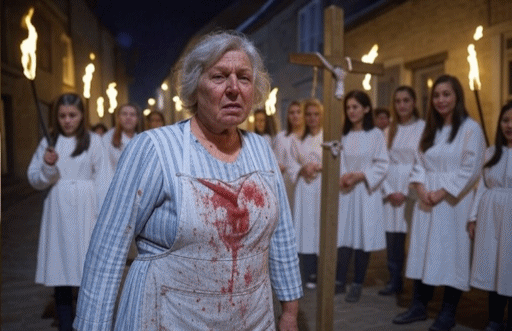 The removal of 'Brigid' from the cross prior to its burning marks one of the very few changes that has been made to the ceremony over the years. The change was made in 1923, after the villagers found that it was getting more and more difficult to persuade a local woman to take on the role of 'Brigid' each year. Traditionalists at the time were opposed to the change, but the prevailing feeling was that the continuance of the tradition was more important than the fine details of the ceremony. March 30th: the Feast Day of Saint WalstanSaint Walstan, who was a patron saint of farm animals, has been venerated in Gypping in the Marsh from time immemorial. On the Sunday closest to his feast day, which lies on March 30th, the altar of Saint Bodkin's church is gaily decorated with the entrails of cows and bulls and during the church service, the vicar solemnly daubs the forehead of each member of the congregation with blood and gore from the entrails. It is not recorded when or why this tradition - which is unique in the British Isles - started, or why Saint Walstan is so venerated in Gypping in the Marsh; but the present-day vicar and congregation are rightly proud to be maintaining such a long-standing tradition, just as their ancesters did. 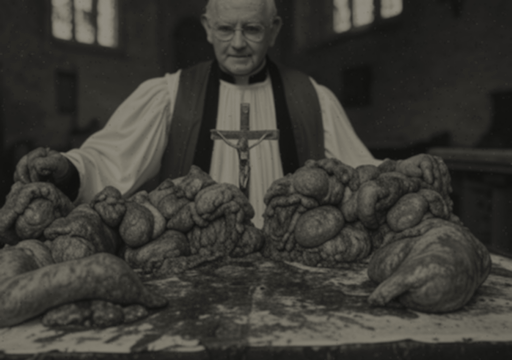 May 1st: Beltane, and the May Day Wicker Bunny BurningMay Day - the celtic festival of Beltane, which marks the beginning of summer - is another important date in the village calendar, and Gypping in the Marsh is renowned for its splendid May Day celebrations. The entire village community gets involved, with morris men, dances around the maypole, fun and games of all description and dancing in the village square until late in the evening. The highlight of May Day is the traditional 'Wicker Bunny' ceremony which takes place at the end of the day. People of all ages come from far and wide to view this unique English spectacle. It always proves particularly popular with animal rights activists. In this ceremony, the large wicker effigy of a bunny rabbit that is erected in the churchyard at Easter each year is stuffed full of small farm animals - poultry, calves, piglets, lambs, etc - and set alight by the lord of the manor in front of the village folk. 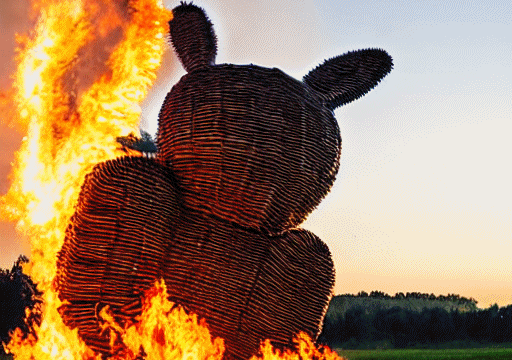 The wicker bunny is traditionally presented in a sitting position, with its ears pointing skywards. May Day 1933 was notable for its unusual 'recumbent' bunny. This was an experiment that was not to be repeated, as that year's bunny lacked the required structural strength, resulting in a number of animals escaping from the bunny before it was fully ablaze and having to be hunted down with axes, mattocks and fire extinguishers. 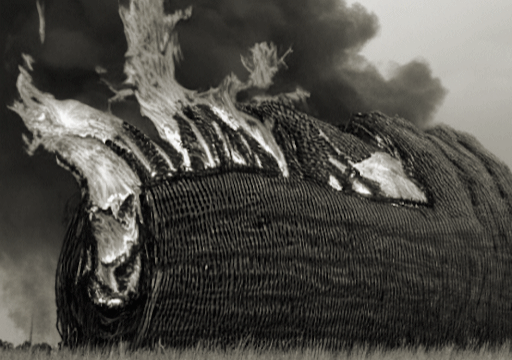 The 'Wicker Bunny' ceremony dates back to pagan times, and originally druids would have placed a human sacrifice inside the bunny, alongside the farm animals. Thankfully this practice was discontinued in 1983. Despite this, the 2006 May Day celebrations were unfortunately marred by the discovery of a burned human body in the charred remains of the wicker bunny. Investigations into this matter proved inconclusive. August 24th: the Feast Day of Saint BartholomewSaint Bartholomew was famously martyred by having the skin flayed from his body - a particularly horrific death. He has been venerated by the villagers of Gypping in the Marsh for many centuries. On the Sunday closest to Saint Bartholomew's feast day, which lies on August 24th, the villagers take part in a unique ceremony. The women of Gypping in the Marsh line the village streets, holding scythes, rakes and other agricultural tools, which have been freshly sharpened in the weeks leading up to the day. One village man has the honour of being 'Bartholomew' for the day. As the village looks on, 'Bartholomew', naked apart from a scanty loincloth, runs through the roads in the village, attempting to avoid the women who are lining the streets, as they do their best to cut him with the tools they are wielding. The ceremony ends either when 'Bartholomew' reaches the safety of Saint Bodkin's churchyard, or when the village women manage to prevent him from doing so - whichever comes first. The following pictures show two instances of this ceremony taking place, over a hundred years apart: in 1882 and 1983. 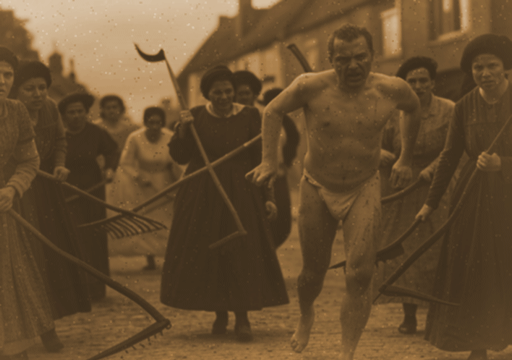 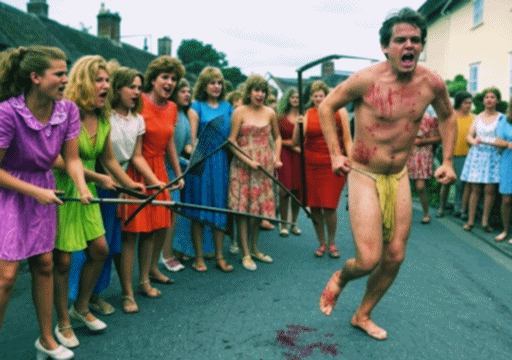 Records show that in 1882, 'Bartholomew' made it to the safety of the churchyard; his 1983 counterpart was not so lucky. November 6th: Samhain, and the Feast Day of Saint BodkinNovember 6th is the most important date in the village calendar, as it marks the Feast Day of Saint Bodkin, the patron saint of wheeltappers and shunters, and the saint to whom the village church is dedicated. Gypping in the Marsh also celebrates the celtic festival of Samhain, which marks the end of the harvest season and the beginning of the darker half of the year, on this date. Samhain is traditionally celebrated on November 1st everywhere else, but the death of Saint Bodkin - a figure of great importance to the village - on November 6th resulted in the people of Gypping in the Marsh shifting their Samhain celebrations to that date. In this time-honoured ceremony which dates back for generations, the entire village gathers together in the afternoon for a large feast. 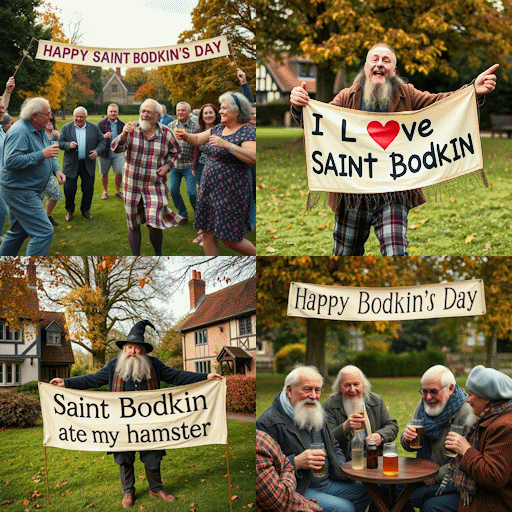 Once the feasting is over the villagers make their way to the church, where the vicar uses the Sacred Knife of Bodkin to sacrifice a goat on the altar before retiring to the organ loft in order to provide musical accompaniment to the climax of the day. As soon as the goat has been slaughtered, twelve teenage virgins are paraded down the aisle towards the blood-soaked altar, where they form a line. As the organ music becomes faster and louder, the lord of the manor (currently the 18th Earl of Gypping), bursts out of the vestry, resplendent in his traditional goat's head mask and long red flowing cloak. As the organ music becomes ever more frenzied, he walks up to the virgins and divests them of their ceremonial robes, one by one. 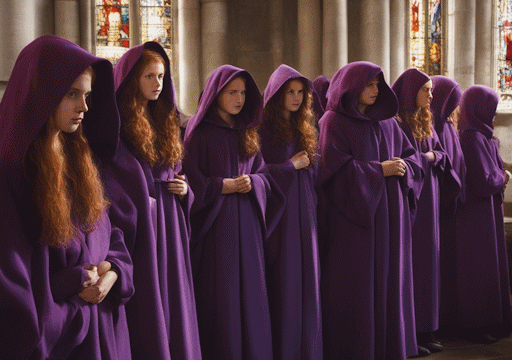 As the rest of the village watches with bated breath, as the music grows ever more fast and ever more loud and as flickering torches cast strange dancing shadows on the bodies of the twelve virgins, the Earl selects the virgin of his choice by daubing an ancient symbol - the Sacred Sign of Bodkin - on her bare chest with blood from the slaughtered goat. As tradition demands, he then takes her in his arms, lifts her up onto the altar and deflowers her in front of the watching congregation, while the vicar comes to a shuddering climax playing with his organ. When all the excitement is over, the evening is rounded off with tea and cakes in the church hall. 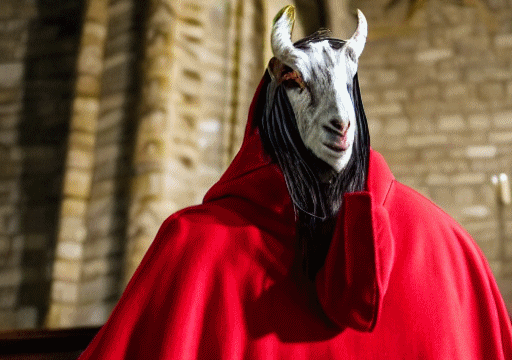 Visitors to Saint Bodkin's may note the fact that the altar shows signs of having been reinforced in recent times. In fact, the legs of the church altar were strengthened in 2004 in preparation for the Feast Day of Saint Bodkin, following an unfortunate incident during the 2003 ceremony when the 18th Earl of Gypping went about his duties with a touch too much enthusiasm. As the ceremony reached its climax, one of the legs of the altar suddenly gave way under the Earl's repeated thrusting and the Earl's virgin of choice fell away from under him as the altar collapsed at a most inopportune moment. This resulted in considerable dry cleaning bills for those seated in the front pews. Since then, the Earl's wife and the members of the parish council have chosen to sit a couple of rows back. It is sad to note that the future of this historic ceremony is now under threat, due to the fact that in recent years it has become increasingly difficult to find twelve teenage virgins in the village. The 2024 ceremony was mired in controversy, after one of the twelve virgins had to pull out at the last minute - an eventful night out with a local farmhand had rendered her ineligible to take part - and her place was taken by the local MP's personal assistant, Beaker - a man in his late 40s. An unfortunate series of mishaps resulted in the Earl accidentally making the Sacred Sign of Bodkin on Beaker's chest. Once the virgin has been chosen, there is no going back. It is probably enough to say that Lord Murray went about his duty with an admirable degree of stoicism. 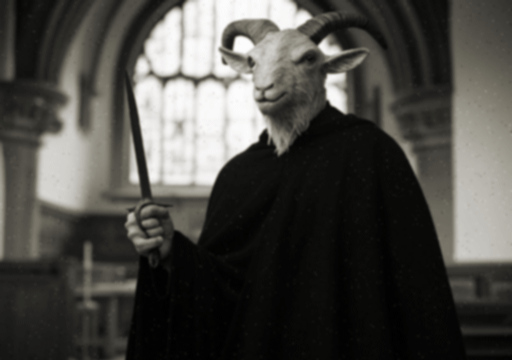 Copyright 2003-2025 www.gilbertmurray.co.uk. All rights reserved. |